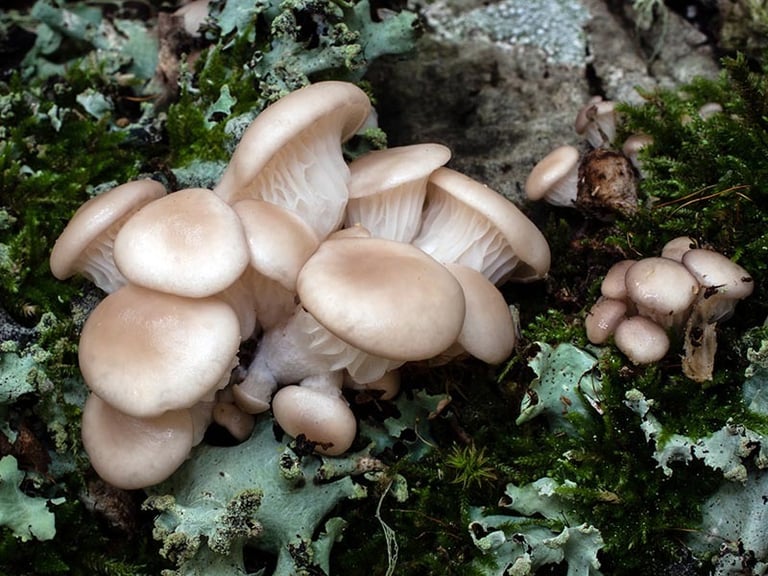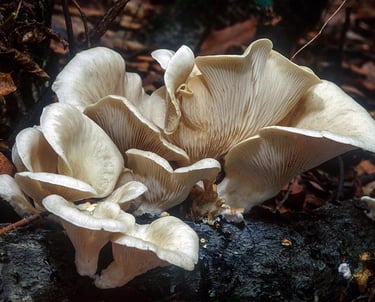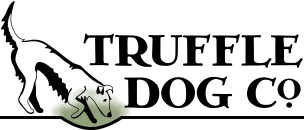Pleurotus Ostreatus


Image By Alan Rockefelle
Hygrophoropsis aurantiaca, also known as the false chanterelle, is a mushroom species that is found in North America and Europe.
Description
Certainly! Here are the numbered descriptions for Pleurotus ostreatus (oyster mushroom):
1. Cap: The cap of Pleurotus ostreatus is generally fan-shaped or oyster-shaped, ranging in diameter from 5-25 cm (2-10 inches). It has a smooth and slightly velvety surface, sometimes with concentric zones. The cap color can vary but is typically shades of gray, brown, or white. It is often wavy or shell-like in appearance.
2. Gill: The gills of Pleurotus ostreatus are closely spaced and descend the stem. They are typically white to creamy in color and have a decurrent attachment, meaning they run down the stem. The gills are thin and often forked or veined.
3. Stem: The stem of Pleurotus ostreatus is short and off-center, ranging from 2-8 cm (0.8-3 inches) in length and 0.5-2 cm (0.2-0.8 inches) in thickness. It is often eccentrically attached to the cap, meaning it is not centrally positioned. The stem is typically white, tough, and sometimes shows a partial veil or ring-like remnant near the top.
4. Spore Print: The spore print of Pleurotus ostreatus is white to pale gray.
5. Habitat: Pleurotus ostreatus is commonly found growing on dead or decaying wood, particularly hardwoods such as oak, beech, and poplar. It is a saprophytic fungus that thrives in a variety of habitats, including forests, woodlands, and urban areas. Oyster mushrooms can also be cultivated on straw or other agricultural waste.
These numbered descriptions should provide a clear understanding of the specific features and characteristics of Pleurotus ostreatus. Remember to exercise caution and consult an expert if you are uncertain about the identification of a mushroom.









